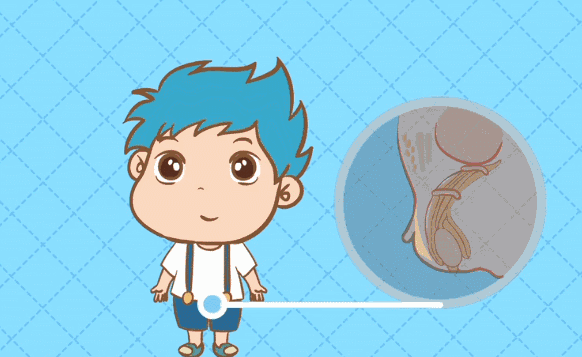Genetics and environment work together! In recent years, news about precocious puberty in children has continued one after another, and the prevalence rate has continued to rise. Many parents are worried. So what exactly is precocious puberty? Do environmental pollution, overweight/obesity, and high-fat diet really cause precocious puberty in children?Let us follow Professor Luo Xiaoping from the Department of Pediatrics, Tongji Hospital, Tongji Medical College, Huazhong University of Science and Technology , and give a wonderful speech on "The Latest Diagnosis, Treatment, Research and Follow-up Management of Central Precocious Puberty" at this year's 24th National Pediatric Academic Conference of the Chinese Medical Association. Learn it!1. Understand the characteristics of children’s growth and development 1. Children’s growth and development
Children's growth and development is a continuous and gradual dynamic process, but the growth and development of each age segment has certain characteristics: the first year of life is the first growth peak after birth, and the growth rate gradually slows down and stabilizes after the second year; by adolescence, The growth rate accelerated again, and a second growth peak appeared.Puberty is the transitional stage from childhood to adulthood. It is also the period when sexual maturity and body growth are complete and reproductive capabilities occur. It lasts on average 3 to 5 years.Behavioral and psychological changes accompany physical growth, maturation of reproductive organs and sexual characteristics. It refers to an abnormal development of secondary sex characteristics in girls before the age of 8 and in boys before the age of 9 . Secondary sexual characteristics include pubic hair, armpit hair, female breast development, and male voice change.2. Precocious puberty can also be divided into “true and false” Central precocious puberty (true precocious puberty)Central precocious puberty (CPP) is due to the premature activation of the hypothalamic-pituitary-gonadal axis function and the enhanced secretion of GnRH pulse signals. The development process of children is consistent with the normal sequence of puberty, but the age is advanced. Accounting for about 80% of precocious puberty, it is more common in girls.That is, CPP is caused by precocious puberty in the HPG axis, and although puberty begins early, the pattern and timing of pubertal events are usually normal. These children show age-incompatible height growth acceleration, advanced bone age, and LH and FSH reaching pubertal levels.Peripheral precocious puberty (pseudoprecocious puberty)Peripheral precocious puberty is caused by the elevation of sex steroid hormones in the body to pubertal levels caused by various reasons. Therefore, it only has the early appearance of secondary sexual characteristics and does not have a complete sexual development programmed process.incomplete precocious pubertyIncomplete precocious puberty is a self-limiting disease in which only the breasts or pubic hair develop prematurely without other symptoms. Only a very small number will develop true precocious puberty.3. What factors are influencing? 1. Inherited genes: Central precocious puberty has a hereditary tendency, and about 1/4 of CPP patients are hereditary. 2. Environmental endocrine disruptors: In recent years, literature has reported that environmental pollution, especially substances discharged into the environment by detergents, pesticides and plastic industries and their degradation products, can produce a series of environmental endocrine disruptors, which will affect the development time of puberty.3. Overweight/obesity: Currently, the global overweight/obesity rate among children is increasing, and there is a significant correlation between childhood overweight/obesity and precocious puberty.
4. Dietary nutrition: Nutritional status is the main potential influencing factor of precocious puberty in children. Consuming a large amount of high-fat and high-protein diet may induce precocious puberty!4. Mechanism of Precocious Puberty—Heredity and Environment (1) Distribution of causes of non-idiopathic CPP
1. Most CPP patients (55%) have complex diseases, of which 45% have hypothalamic lesions and 55% have non-hypothalamic lesions.2. Common hypothalamic lesions: hamartomas, gliomas, arachnoid cysts, syndromic CNS midline abnormalities, and malformations with adhesions between the hypothalamus and the hypothalamus.3. Common non-hypothalamic diseases: narcolepsy, RASopathies, encephalopathy, autism spectrum disorder, other chromosomal or molecular diseases: such as: William-Beuren, Russell-Silver, Temple, Kabuki syndrome, or 2, 9, 11, 13, 21, X chromosome abnormality.(2) CPP has a hereditary tendency. About 1/4 of patients with congenital CPP are hereditary.29.6% of CPP patients are maternally inherited, and the genetic basis is unclear. 37% of CPP patients are paternally inherited.Patients with familial CPP are mostly paternally inherited, and mutation of the paternally inherited imprinted gene MKRN3 is a common cause of familial CPP.1. MKRN3 deficiency causes familial CPP, including the coding region and regulatory region. Among patients with familial CPP, the MKRN3 mutation rate reaches 45%.2. Functional mutations of KISS1/KISSIR are related to the occurrence of central precocious puberty and may regulate puberty through FSH and LH levels.3. DLK1 is the second paternally expressed imprinted gene among the loss-of-function mutant genes that cause CPP.4. Genes currently found to be related to the onset of puberty include: GPR54, GNRH1, GNRHR, Lin28B, MAPK3, PXMP3, VGLL3, ADCY3-POMC, etc.■ The latest results of different research projects :1 MKRN3 can interact with Nptx1 and inhibit Nptx1 activity through ubiquitination. MKRN3 mutations will lead to insufficient inhibition.MKRN3 is the first heterozygous mutation found in humans that inhibits GnRH secretion.It has been proven that the loss of paternally inherited MKRN3 gene function is related to the pathogenesis of familial CPP, and it has also been reported that mutations in the maternally imprinted MKRN3 gene cause CPP.MKRN3 inhibits GnRH secretion by degrading Nptx1 (but the mechanism by which Nptx1 regulates GnRH is unknown);MKRN3 inhibits GnRH secretion by degrading Lin28B (but the mechanism of Lin288 regulating GnRH is unknown).Prepuberty: MKRN3 increases, Kiss1, GnRH, NPTX1, and LIN28B decrease;Puberty: MKRN3 decreases, Kiss1, GnRH, NPTX1, and LIN28B increase;MKRN3 cannot ubiquitinate and degrade Kiss1 and GnRH, but it can degrade NPTX1 and LIN28B.Conclusion: MKRN3 does not directly regulate Kiss1 and GnRH but indirectly regulates Kiss1 and GnRH by degrading NPTX1 and LIN28B. However, the mechanism by which NPTX1 and LIN28B regulate Kiss1 and GnRH is unknown.Previous mouse experiments have shown that MKRN3 is negatively correlated with NPTX1, but there is no correlation between the two in clinical trials, suggesting that whether human MKRN3 regulates puberty by degrading NPTX1 remains to be verified.2 DLK1 loss-of-function mutations cause CPPFemale adult offspring with CPP caused by DLK1 gene mutations have an increased incidence of metabolic abnormalities.Subjects: 115 CPP girls (all without DLK1 or MKRN3 mutations); Results: Two children with DLK1 hypomethylation were found, and no MKRN3 methylation abnormalities were found; Conclusion: DLK1 hypomethylation may cause CPP
3 The onset of pubertal development in children with precocious puberty (PP) is closely related to the volume of the olfactory bulbSubjects: Retrospective study in Turkey, 125 girls (49 in CPP group, 76 in control group); Results: The volume of the main olfactory bulb and the height of the pituitary gland in the CPP group were significantly higher than those in the control group, and the volume of the main olfactory bulb was positively correlated with the height of the pituitary gland; Conclusion: The main olfactory bulb may be related to the pathogenesis of CPP, and the mechanism may be by promoting GnRH secretion.
4 Saddle spines may cause CPPSubjects: 147 children with CPP (130 girls and 17 boys); Results: The percentage of sellar spine in children with CPP was 3.5% (10% × 35%); The age at diagnosis of hamartoma, FSH, and LH were significantly higher than those in other groups, and there were no significant differences in other clinical characteristics between the groups; Conclusion: Spine spines may cause CPP: CPP caused by different etiologies cannot be distinguished by clinical features.
5 Early HPG axis activation in CPP girls has a remodeling effect on the cerebral cortexSubjects: The study investigated the structural imaging on the MR system of 65 girls (age 4.3~8.0 years old); Results: CPP girls showed thinner cortex primarily in the right middle frontal cortex, and this morphological difference was positively correlated with estradiol (E2) levels. Conclusion: Early HPG axis activation in girls with CPP appears to exert a remodeling effect on brain anatomy (mainly in the prefrontal cortex) and may affect psychological development after significant changes in sex hormones.
6 Endocrine disrupting chemicals (EDCs) can cause precocious pubertySubjects: 140 children with precocious puberty (58 in CPP group, 82 in PPP group) Results: EDCs exposure rate, CPP group < PPP group, bone age progression, EDCs-induced exposure group > no exposure group Conclusion: EDCs may mainly cause peripheral precocious puberty, and its bone age progresses faster than precocious puberty not caused by EDCs.
5. What should I do if children have precocious puberty? (1) Based on the above research, we can have better diagnosis and treatment methods for precocious puberty, such as:
1. Serum MKRN3 level can assist in the diagnosis of CPP;2. Random urine LH can be used as an effective screening method for girls with CPP;3. Morning urine LH can be used as a screening tool for diagnosing CPP;4. Pelvic ultrasound can be used to diagnose ICPP and evaluate treatment efficacy;5. Serum inhibin B, AMH and leptin concentrations are positively correlated with the clinical manifestations of CPP girls;6. Computer learning technology to scientifically predict girls’ CPP model;7. GnRHa is the international standard drug for the treatment of CPP.(2) How should we conduct long-term follow-up and management of children diagnosed with CPP?■ According to research, the advantages of GnRHa treatment are:1. It can improve the predicted adult height (PAH) of children and delay the age of menarche;2. Conducive to improving the mood of children with CPP;3. Timely treatment of patients can improve their lifelong height;4. It has a protective effect on the fertility of CPP patients.■ The prevalence of overweight, obesity and insulin resistance increases in girls with CPP, so children with CPP require long-term management.
|


